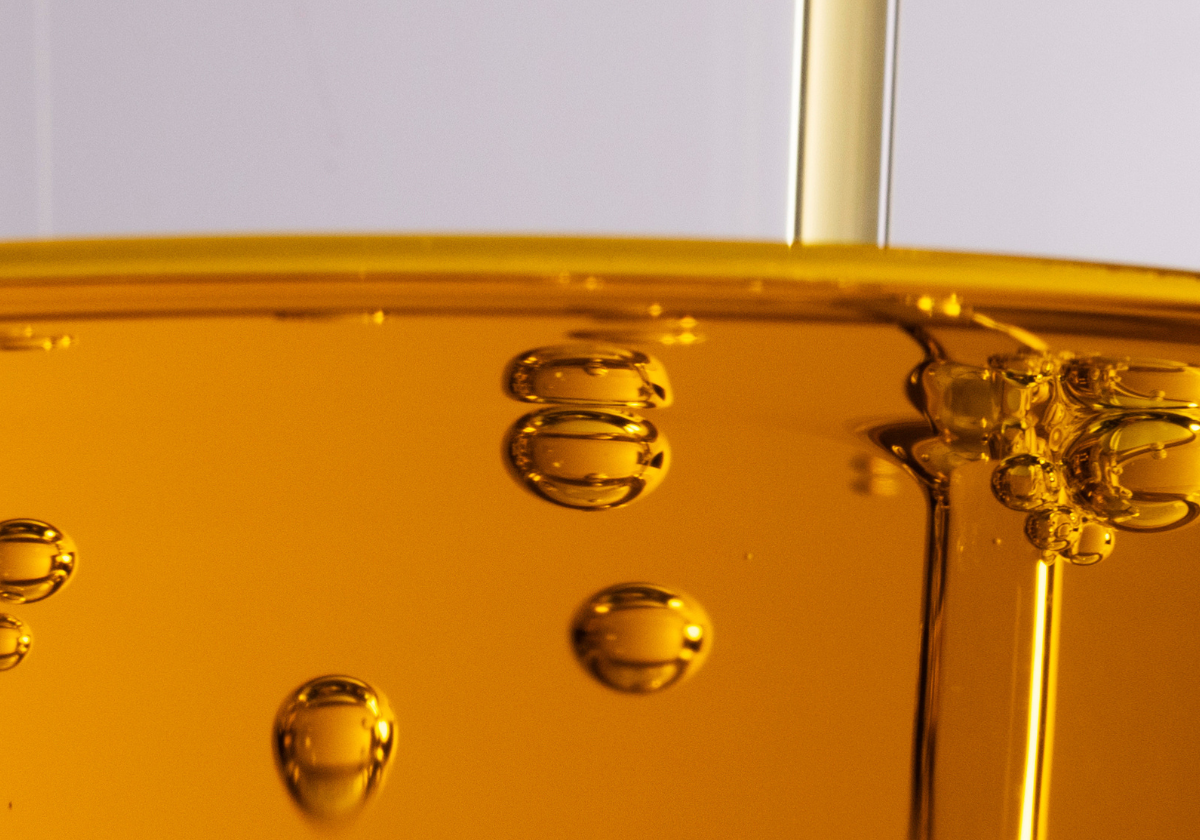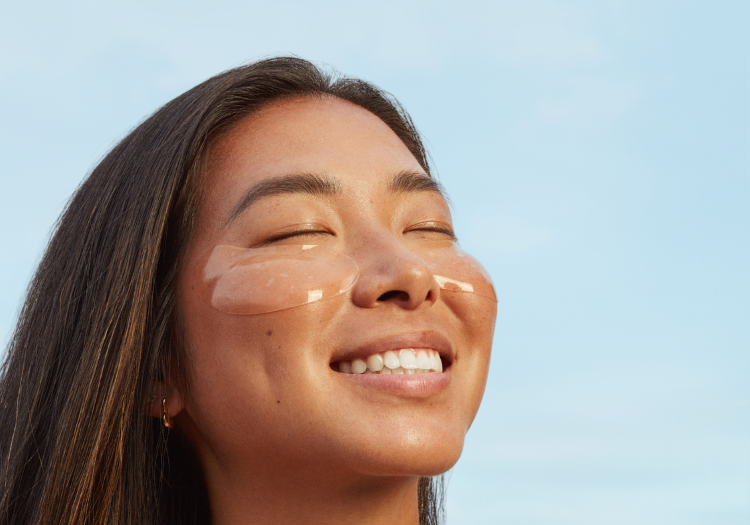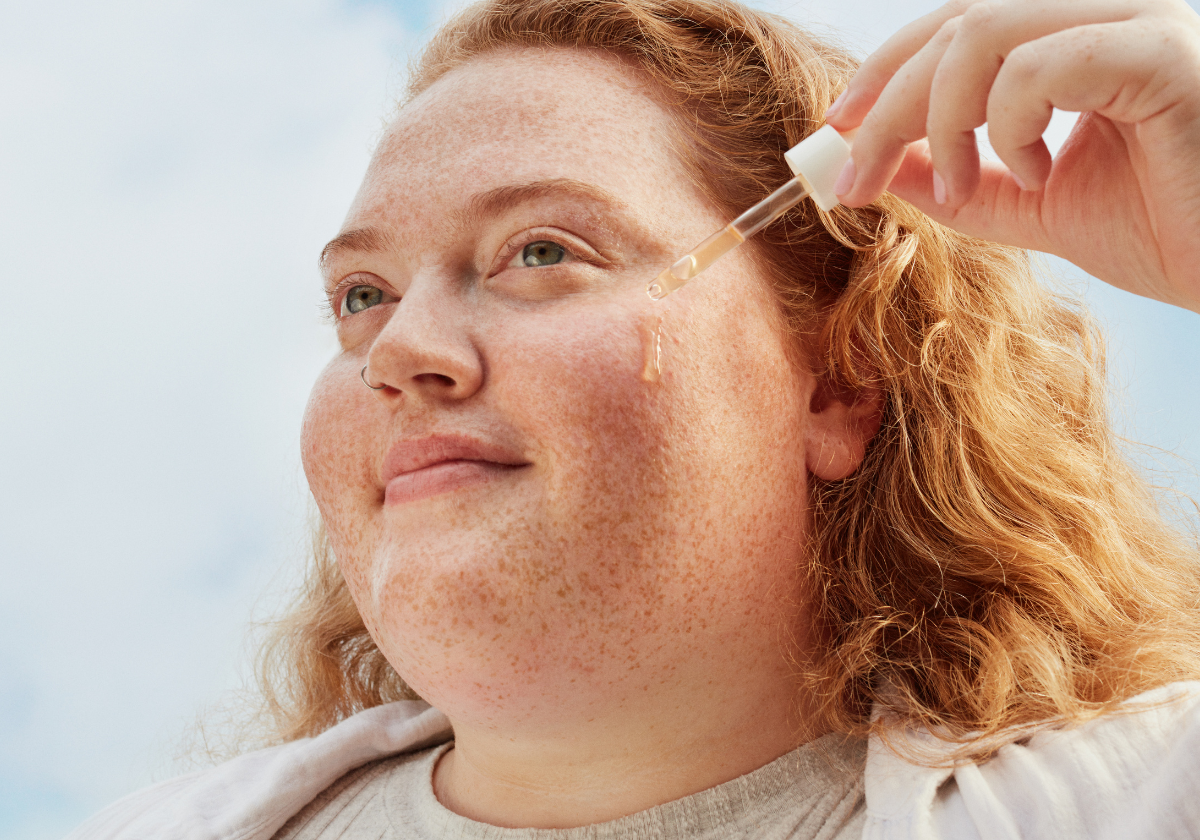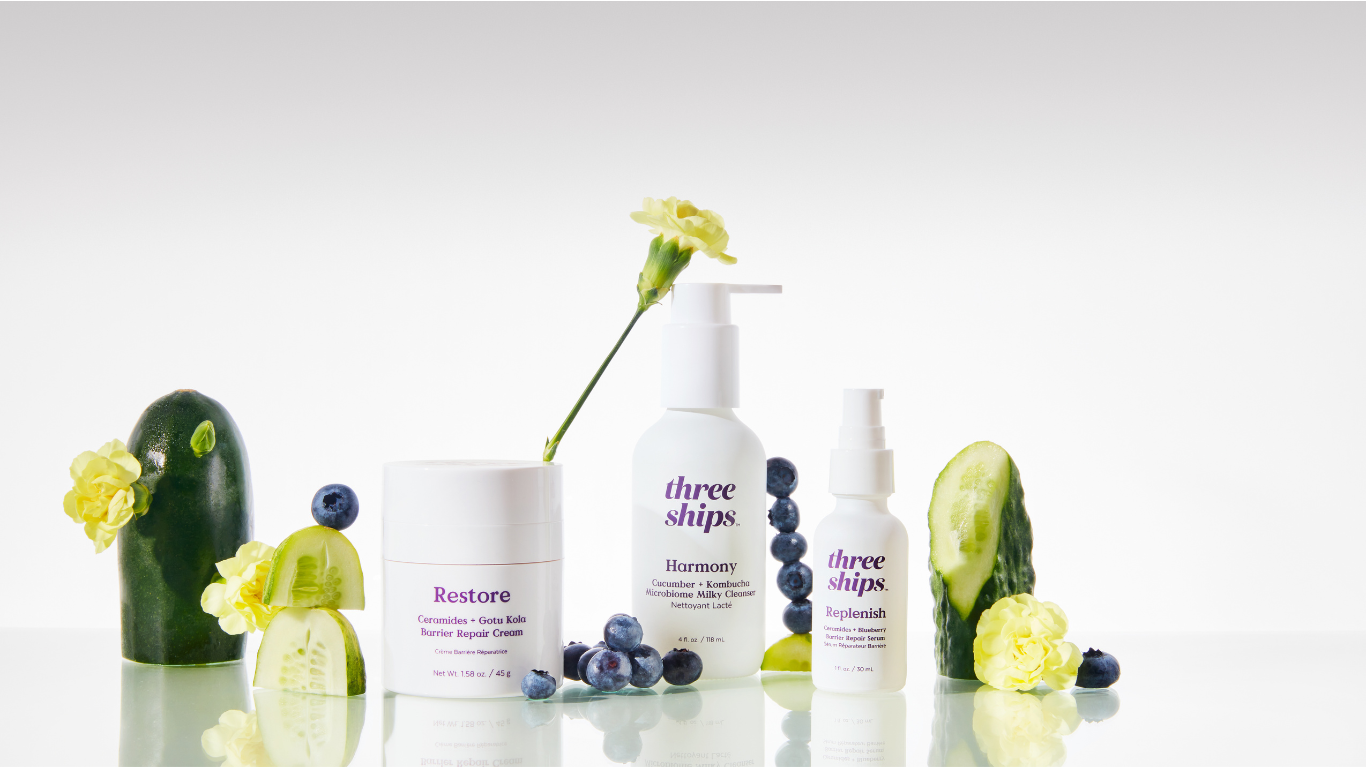What Is AHA and BHA?
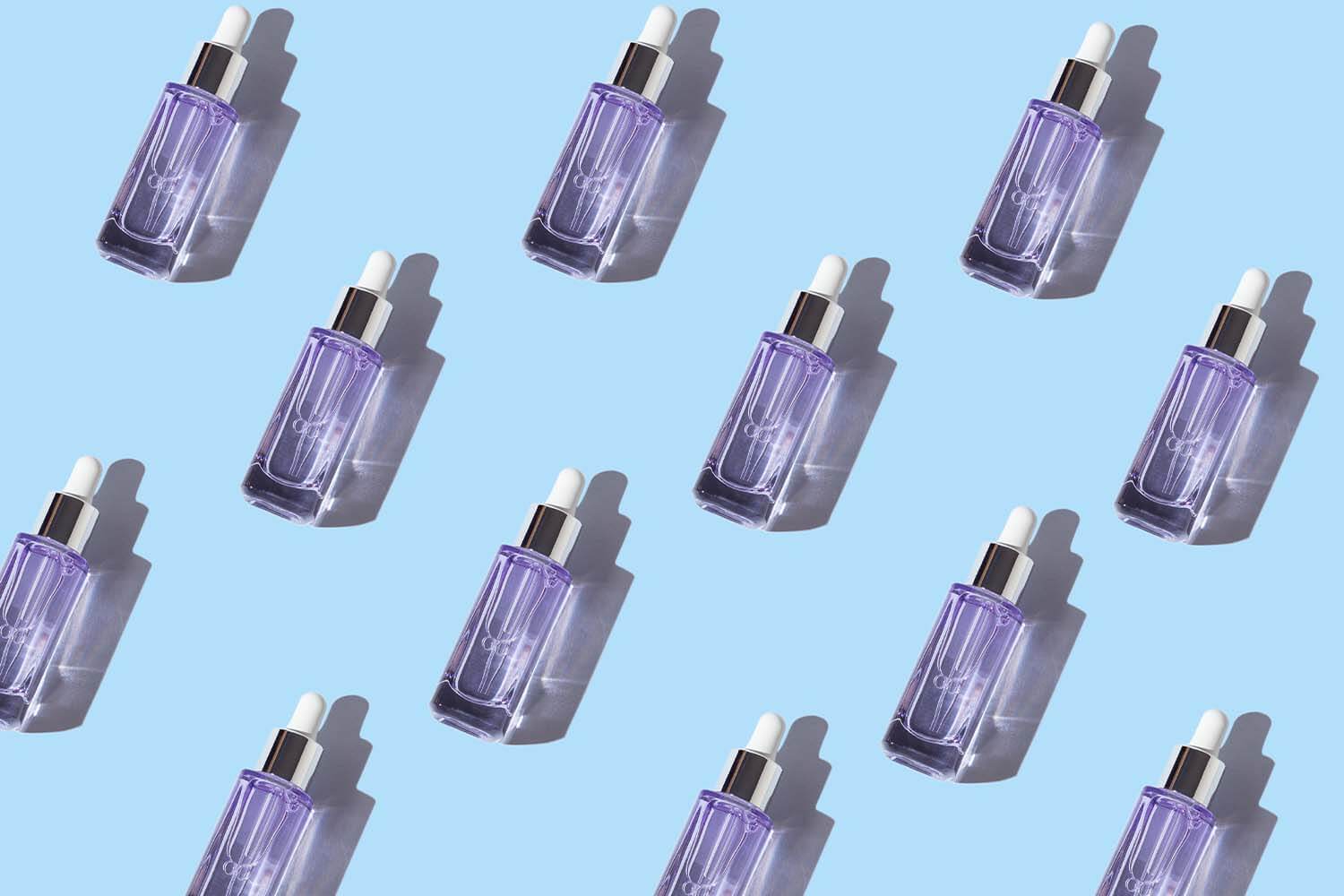
Alpha-hydroxy acids (AHA) are natural water-soluble acids found in food that many brands put inside their cosmetic exfoliating products. These naturally-occurring acids help to shed off the top layer of skin to reveal younger, fresher skin cells.
Beta-hydroxy acids (BHA) are fat-soluble organic compounds used to chemically exfoliate the skin. Meanwhile, hydroxy acids are becoming more and more popular in mainstream cosmetics.
These chemical exfoliants have been shown to be super helpful for dry, mature, or oily skin by aiding the natural skin-shedding cycle and removing dry, dead skin cells.
What Are The Benefits of Chemical Exfoliants?
As your skin gets older and is exposed to increasing amounts of ultraviolet radiation, environmental toxins, and other skin irritants, it becomes more difficult for your skin to shed old skin cells than normal.
This can lead to patchy, uneven skin tones, hyperpigmentation, increased blemishes, fine lines and wrinkles, and enlarged pores. Chemical exfoliants can help combat this and give new life to your skin.
Some common benefits you’ll see are:
- Reduced dark spots
- Minimalized pores
- Softer, smoother looking skin
- Decreased breakouts
- Reduce hyperpigmentation
Concentrations of AHAs and BHAs
Various types of AHAs and BHAs are out there, but before we get into that, we also have to discuss the different concentrations of these chemical exfoliants. The concentrations determine how potent each exfoliant will be and how strong it will be on your skin.
AHA typically comes in concentrations between 5%-10%, 5% being ideal for more sensitive skin, and 10% meant for more problematic skin. BHA will usually come between .05%-5%, but normally 2% is the average that you will see.
Because BHA is fat-soluble, they don’t need as high a concentration as AHA since they go deeper into the skin. Now let’s look at the different types of exfoliants to choose from.
What Are the Types of AHA?
There are many different types of AHA and BHA to choose from, depending on your skin type. It’s important to find one that isn’t too harsh for your skin, but still strong enough to get the desired results.
AHA is typically better for dry skin types as they are humectants, meaning they attract moisture from the air to your skin, which keeps your skin feeling hydrated and healthy. They also don’t go as deep into your pores as BHA, so they can exfoliate your skin without drying it out.
Glycolic Acid
Glycolic acid is one of the more common types of AHA that you’ll see in cosmetic exfoliants. Derived from sugar, glycolic acid has one of the smallest molecules in the AHAs family, meaning that it can penetrate deeper into the skin for a more thorough scrub.
However, this also means that glycolic acid is one of the harsher acids for your skin, so if you are new to chemical exfoliants or have more sensitive skin, this might not be the best first option.
However, this would be a great option for those with less sensitive skin or those more familiar with chemical exfoliants.
Lactic Acid
While not suitable for those with dairy or lactose sensitivities, lactic acid is a much gentler AHA. It has bigger molecules than glycolic acid, so it’s an ideal beginner exfoliant for those just starting out.
Lactic acid works by removing keratin, which is essentially the glue that holds the dead skin cells to your face. It can also help brighten your skin for that perfect glow.
Mandelic Acid
Mandelic acid has molecules even larger than lactic acid, making this a great AHA for people with slightly sensitive skin. This acid also aids in speeding up collagen production, which can help you get clearer and tighter skin.
But watch out! Mandelic acid is derived from almonds, so stay away if you have any nut allergies.
Malic Acid
Like Mandelic acid, malic acid has larger molecules, taking longer to penetrate the skin. Although it is faster than mandelic acid, malic acid is derived from apples, but you will more commonly see the synthetic version of It because it is easier to sustain. It can additionally help with moisture retention to prevent your skin from drying out.
Using a lower concentration of malic acid in conjunction with a more potent AHA is a great way to utilize this exfoliant. It will help exfoliate the skin at different rates to get maximum effectiveness.
Tartaric Acid and Citric Acid
Tartaric acid and Citric acid are both found in fruit, but like Malic acid, Tartaric acid is commonly sold in the synthetic form to maintain stability. Although they are AHA, these acids are primarily used for pH balancing your skin.
Because our environment can be naturally acidic, having a healthy pH balance is vital in preventing skin issues such as breakouts, dark spots, and wrinkles. It also gives exfoliating acids the ideal foundation to properly cleanse your skin.
What Are The Types of BHA?
Now that we’ve covered all the different types of AHA let’s jump into the fat-soluble counterpart and the various kinds you can find.
Salicylic Acid
Salicylic acid is the most common form of BHA. Known to help with acne, skin redness, irritation, and skin smoothing, Salicylic acid is a go-to for many with problem skin due to its wide availability and various options.
This Refresh Papaya + Salicylic Acid Cleanser is great for acne-prone skin and contains papaya extract to help brighten and balance your complexion. Salicylic acid is also commonly used for skin damage due to excessive UV rays, so you can always combine it with a good SPF to prevent further damage.
Willow Bark Extract
Willow Bark is a natural source of salicylic acid and works great for rosacea, psoriasis, and eczema due to its anti-inflammatory properties. While it is a less common BHA in skincare, willow bark extract can be a great tool for skin conditions that aren’t necessarily related to your skin type.
Willow bark also contains tannins, which help reduce pore size, eliminate excess oil production and polyphenols to kill germs on the skin, and reduce redness and swelling. Willow bark makes a great partner with salicylic acid for maximum cleansing benefits.
Tropic Acid
Tropic acid is rarely available in skincare products but is still considered to be a BHA. This BHA would likely be prescribed by your Dermatologist as needed.
There is a lot more AHA out there than BHA, although BHA is the fan-favorite for acne-prone skin. Since they go deeper into the skin than an AHA, they get a more thorough cleanse of your pores and help to prevent oil build-up that causes acne and blackheads.
How To Use AHA and BHA
Depending on the results you want to achieve, there are many different AHA and BHA exfoliants to choose from. As we discussed, BHA is better for acne-prone, redness-prone, oily, or combination skin because they get a much deeper cleanse.
This wouldn’t be ideal if you have sensitive skin as it may be too harsh for your skin and cause redness or irritation rather than get rid of it. Patch testing is a great way to see how your skin reacts to exfoliants and determine if one is too harsh or not strong enough for your skin type.
However, AHA at a lower concentration can be great for sensitive skin as it can offer a thorough facial exfoliation without stripping too much natural oil from your skin. You may also use a higher concentration if you have oily or mature skin. This will help clean out the pores and balance your skin to minimize and prevent fine lines, wrinkles, hyperpigmentation, and breakouts.
It’s also essential to include a great moisturizer for your skin, as these exfoliants can dry you out if you don’t moisturize after using them.
While there are many benefits to having a chemical exfoliant in your skincare routine, it’s important to remember that too much of a good thing isn’t always a good thing.
Depending on your skin type, exfoliants should only be used three to four times a week to preserve your skin’s natural oils and moisture.
AHAs and BHAs also work well with products like Dream. However, it is important to slowly incorporate chemical exfoliants into your nighttime skincare routine. Learn more about how Bio-Retinol can help target skin concerns like fine lines, acne, dark spots, and uneven skin texture.
When Not To Use AHA and BHA
AHA and BHA can be harmful if you have extremely sensitive or dry skin as they can strip away too much natural oil and leave your skin feeling dry and dull.
AHA and BHA should also be avoided if you aren’t regularly using SPF on your skin, as you will be more susceptible to sun damage as your newer skin cells surface.
Choosing the Right Exfoliant for You
The great thing about AHA and BHA is that there’s something for (almost) everyone! The first step is knowing your skin type to find an exfoliant that best suits your needs.
Once you know your skin type, it’s just finding the right exfoliant for you. Whether it’s glycolic acid for oily and acne-prone skin or lactic acid for beginners and mildly sensitive skin, the right AHA or BHA cleanser is available for you.
Bottom Line
Chemical exfoliants are not for everyone, but we've got you covered if you fit the criteria and think that an AHA or BHA can help you achieve glowing skin.
We want you to look and feel your absolute best, and we want you to have the glowing skin you’ve been dreaming of.
There’s no one-size-fits-all when it comes to skin care, but we’re here to help make the journey to beautiful, healthy skin as easy as possible.
Don’t know your skin type? Take our quiz to find your skin type and choose the right products tailored to your skin.
At Three Ships Beauty, we recommend listening to your skin first before starting a new skincare routine. Your skin’s reaction to different products can easily help you determine what’s working and what isn’t. So don’t be afraid of a little trial and error to find the perfect solution for you!
Sources:
Glycolic acid | HOCH2COOH - PubChem
- Tags: rec1:refresh-papaya-salicylic-acid-cleanser rec2:dream-bio-retinol-shorea-butter-night-cream-1 Skin Education
0 comments
